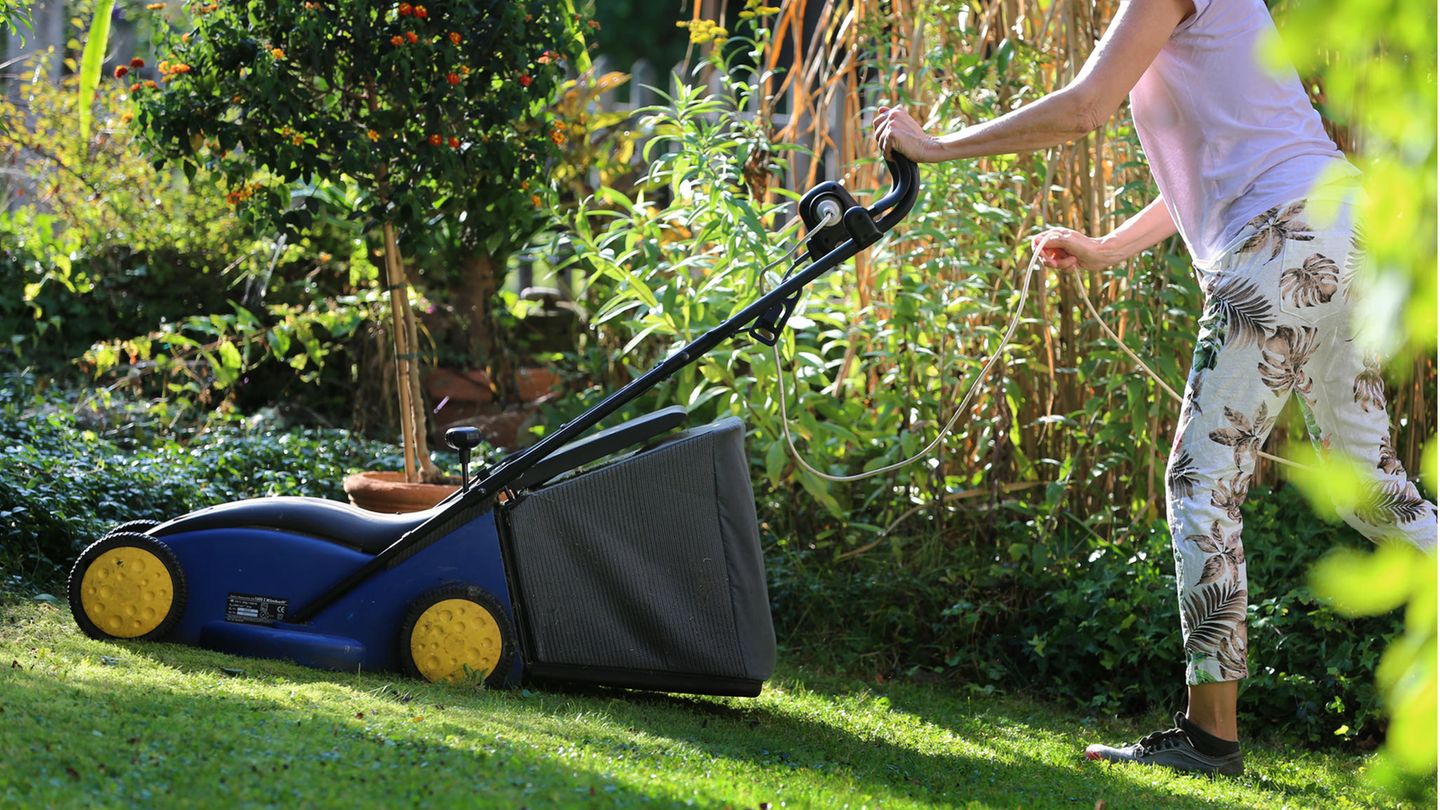Mowing the lawn may not be an art – but it is definitely more than just jogging across the meadow in shorts with the lawnmower. With these seven tips, you can keep your greenery in the garden well-groomed throughout the summer.
No, the little green stalks really don’t have it easy. Small and large feet are constantly trampling on them. And as if that weren’t bad enough: Almost every week, they are chopped off a head by a more or less noisy machine. And yet – or that’s exactly why the innumerable stalks hold together and stand up again and again. The result: a healthy, green and well-groomed lawn – for the whole family.
Are you still unsure about the basics of lawn mowing? We explain the seven most important rules:
1. Mow regularly
The top and most important rule. At least for everyone who cares about their lawn. On average, high-quality and well-cared for stalks grow about two and a half centimeters – every week. And that is exactly what the mowing frequency is based on. It should be at least every seven days so be taken out of the shed and trimmed the meadow. The frequent and above all regular cut ensures that the blades of grass branch out better at the base and the surface remains evenly dense.
Tip: In May and June, the stalks grow faster than average. During this time, the lawn can also be mowed every four to five days.
2. Pay attention to the (knife) sharpness
Tackle the blades of grass in your allotment garden with the sharpest possible “weapon”. As a rule, so-called sickle lawnmowers are used in Germany. The rotating sickle cuts the grass horizontally. The following applies: the blunter the knife, the more frayed the grass appears after trimming. So check the stalks at the cutting edge after the work is done. In addition to the sharpness of the blades, the performance of the lawn mower engine plays an important role. As a rule of thumb, the higher the speed, the faster the blade rotates, and the cleaner the cut.
3. Choose the correct cutting height
The blades on the grass courts of the legendary Wimbledon tennis tournament measure exactly eight millimeters. With a normal lawn in front of the house or in the small garden, it can be a bit more. About four centimeters have proven themselves for a versatile meadow. It looks chic and the straws like it. For lawn mowers without centimeter (or millimeter) information, it is worth taking a look at the operating instructions. Here you should find the explanation for which level (usually 1 to 5) corresponds to which cutting height. If in doubt, a short test mowing and a folding rule will provide the relevant information.
4. Don’t cut off too much
Blades of grass are more sensitive than some hobby gardeners assume. They are especially unforgiving if you overdo the mowing and trim them by half or more. Why? The vegetation point is about halfway up the culm. And it should not be removed if possible. If you cut grass at this or below this point, the plant needs a lot of time and energy to regenerate and sprout again. Ergo: Annoying gaps appear in the lawn. In addition, prolonged drought means that the meadow “burns” more quickly and subsequently turns brown. The so-called “one-third rule” stipulates that stalks should be shortened by a maximum of one-third of their current length. With a cutting height of four centimeters, mowing should be done at the latest when the lawn has grown six centimeters high.
5. Do not mow when it is wet
What is still vital when sowing and immediately after sowing the lawn should be avoided when mowing the lawn as far as possible. If the stalks are damp, the mower cannot cut them off cleanly. Particularly annoying: the wet clippings clump together and stick under the lawn mower instead of flying into the grass catcher. In addition, regular wet cutting reduces the life expectancy of the motor.
Tip: The freshly cut stalks dry out very quickly under the blazing midday sun. The lawn should therefore be mowed in the evening hours if possible and then watered.
6. Use the cutting width of the lawnmower
Logical, but not self-evident. While the greenkeepers in the football stadium like to conjure up chessboards or at least stripes in the green with a lot of patience, the lawn in the garden should look as even and uniform as possible after mowing. In addition, the lawn cutting should be done as quickly as possible, not only because of the background noise. The double cut succeeds if you use the full cutting width of the exploits. To do this, the mower should roll exactly one wheel width along the track that has already been cut.
7. Observe rest times
Nothing is further away from most allotment gardeners than breaking up a dispute with the neighbors from the garden fence or calling on the residents in the neighborhood to take action. Especially when mowing the lawn, there are always discussions. Basically, mowing the lawn on Sundays and public holidays is taboo. Otherwise, the guidelines of the 32nd Federal Immission Control Ordinance (BImSchV) apply. According to this, petrol lawnmowers may be put into operation from Monday to Saturday at the earliest from 9 a.m. With the now widespread electric mowers, you can get started at 7 a.m. except on Sundays and public holidays. The rather rare, because sweaty hand mowers are not only quiet, but can be used at any time.
The usage times at a glance
|
Gasoline Lawnmower |
electric lawn mower |
hand mower |
|
|
Mon.-Fri. |
9am-1pm / 3pm-5pm |
7am-8pm |
continuous |
|
Saturday |
9am-1pm / 3pm-5pm |
7am-8pm |
continuous |
|
Sunday and public holiday |
not allowed |
not allowed |
continuous |
|
lunch break |
1pm-3pm |
– |
– |
Important: There is no legally regulated nationwide rest period for lunchtime. Different regulations apply in some federal states and municipalities. Those who would rather de-stress than recharge should put their feet up and the lawnmower to one side between 1 p.m. and 3 p.m. After all, that’s what the gem in the countryside is there for.
Sources:; ;
Source: Stern
I am an author and journalist who has worked in the entertainment industry for over a decade. I currently work as a news editor at a major news website, and my focus is on covering the latest trends in entertainment. I also write occasional pieces for other outlets, and have authored two books about the entertainment industry.




